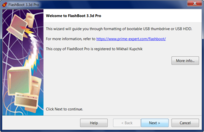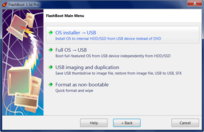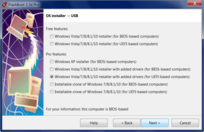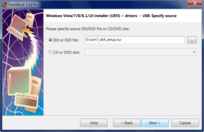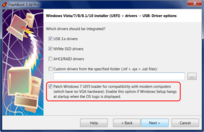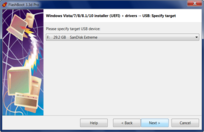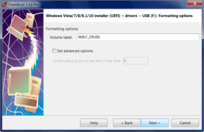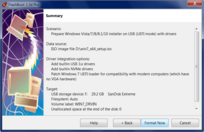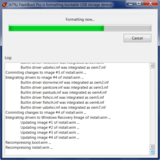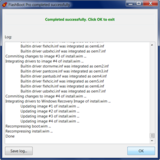FlashBoot: Install Windows 7 to New Laptop or New PC
If you dislike Windows 10/11 due to OS-builtin advertising, forced updates, untimely reboots and pervasive telemetry (which can't be disabled) — then only viable option is returning to Windows 7.
But hardware marches on, and older operating systems hardly can play catch-up. Installation of Windows 7 to new laptop fails right on the first screen: mouse, keyboard and boot device are all inaccessible to Windows setup because of missing USB 3.x drivers. In this case, error message like this appears:
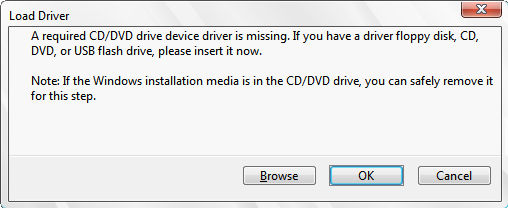
A required CD/DVD drive device driver is missing. If you have a driver floppy disk, CD, DVD, or USB flash drive, please insert it now.
Because of missing drivers for USB 3.x controller, any plugged-in USB thumbdrive is ignored here, and also it's impossible to move cursor and click OK, because USB-connected mouse and keyboard doesn't work as well.
Using FlashBoot, you can install Windows 7 to new laptop or new PC with no hassles.
FlashBoot will prepare Windows setup on USB thumbdrive with integrated drivers,
so you can easily and quickly install Windows 7 to any new computer, including
Skylake, Kabylake and Ryzen platforms. For your convenience, FlashBoot contains
builtin USB 3.x, NVMe and RAID drivers. FlashBoot can also integrate any user-supplied
drivers (.inf + .sys + .cat files).
This example demonstrates conversion of Windows 7 setup ISO file with slipstreaming all FlashBoot-builtin drivers to bootable USB thumbdrive, for installation of Windows 7 to the new laptop.
1) Run FlashBoot Pro, click Next:

2) Choose "OS installer -> USB" in the Main Menu:
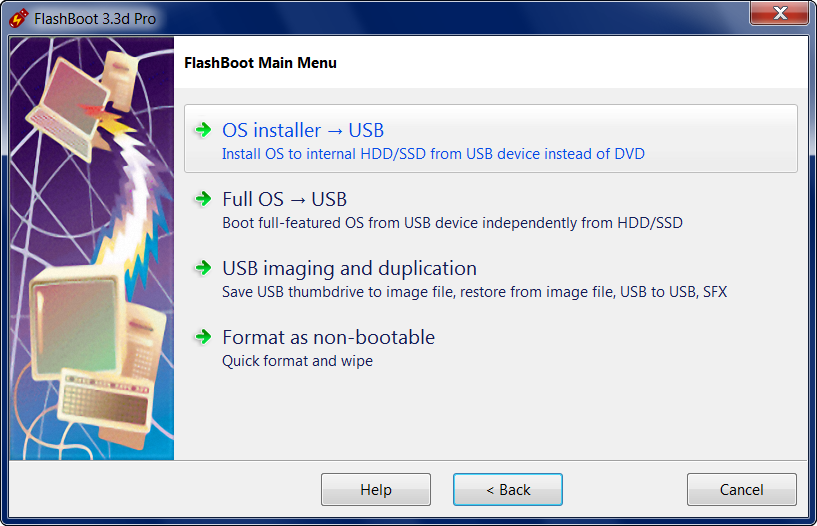
3) Choose "Windows Vista/7/8.x/10/11 installer with added drivers (for BIOS-based computers)"
or "Windows Vista/7/8.x/10/11 installer with added drivers (for UEFI-based computers)"
in this menu and click Next:
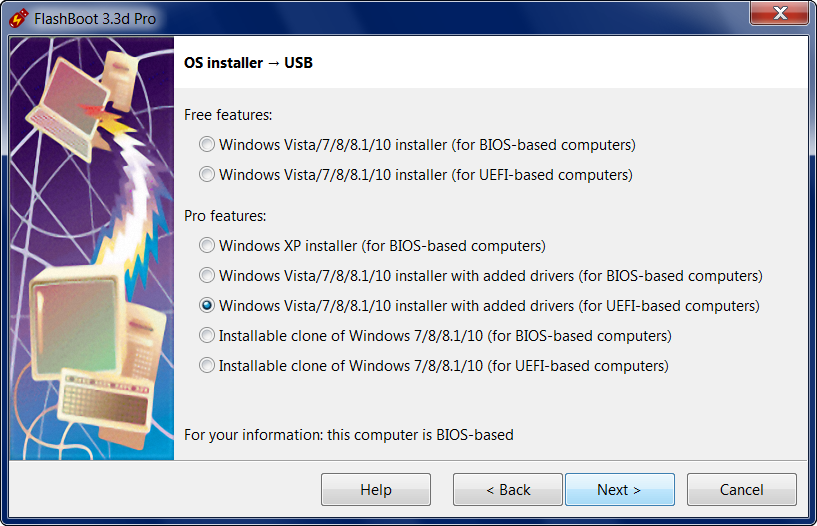
4) Specify ISO image file (or DVD disc, or ESD image file) of Windows setup and click Next:
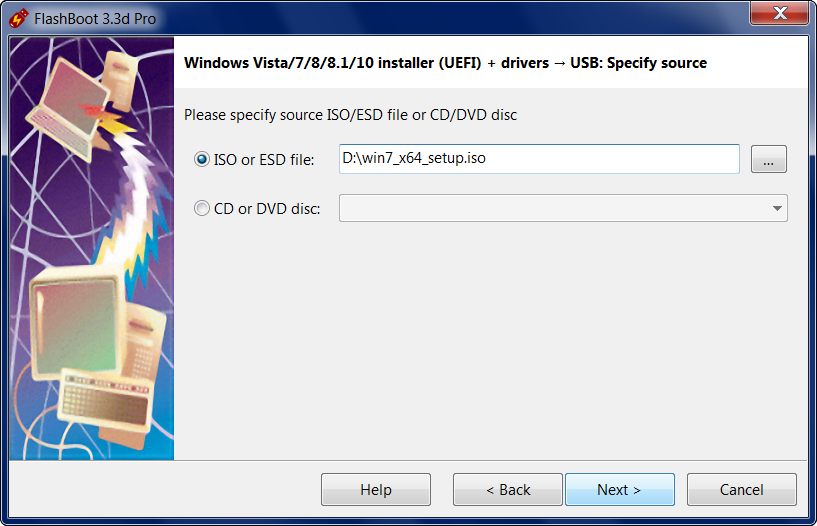
5) Choose which drivers should be integrated and click Next.
Starting from version 3.3c, FlashBoot Pro adds generic USB 3.0/3.1/3.2 Host Controller driver, compatible with Windows 7 (instead of collection of vendor-specific drivers). So, unlike other tools, FlashBoot Pro can aid in installation of Windows 7 to the modern computers which are based on Intel chipsets with USB 3.1/3.2 Host Controllers (B360, B365, B460, H370, H470, Z370, Z390, Z490) and AMD chipsets with USB 3.2 Host Controllers (B550, X570).
Starting from version 3.3d, FlashBoot Pro adds generic NVMe driver, which is compatible with any type of NVMe storage device from any vendor.
Also, if you are going to install Windows 7 on a modern computer (with pure UEFI firmware and without CSM support), you should apply the patch for Windows 7 UEFI loader. See details below.
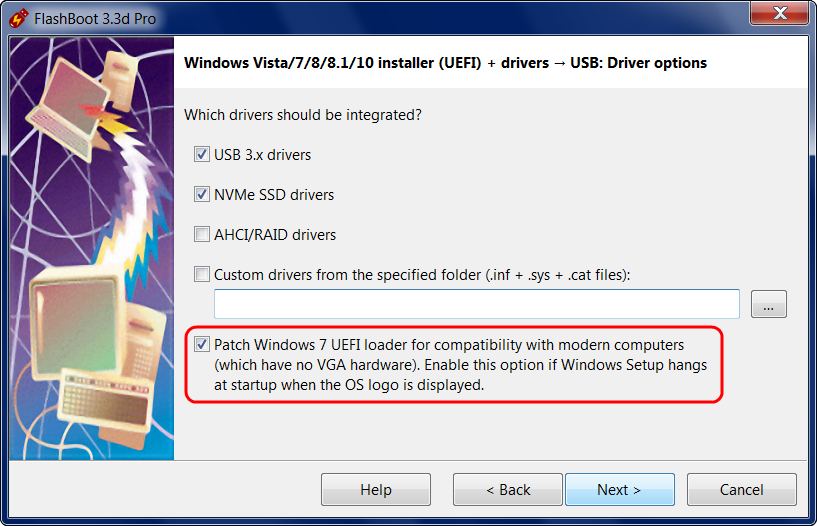
6) Specify target USB storage device and click Next:
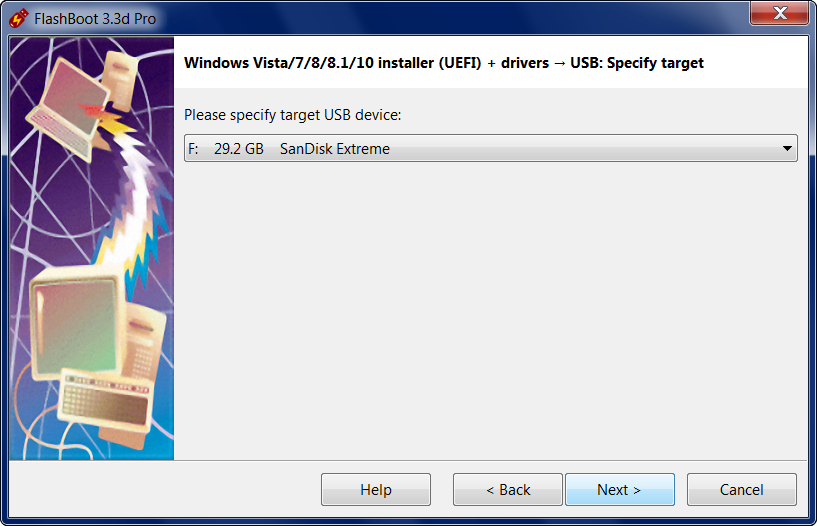
7) If necessary, change volume label and filesystem type, or leave them as is, and click Next:

8) Check summary information and click Format Now:

9) Wait for process completion:
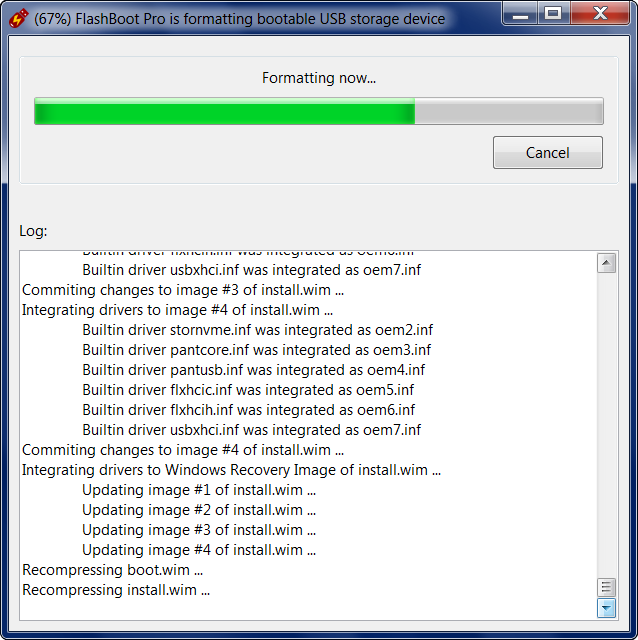
10) Bootable USB storage device is ready to use. Click OK to exit:

Please note: driver slipstreaming feature requires FlashBoot Pro, but plain conversion of Windows setup ISO file or DVD disc into bootable USB thumbdrive is available in FlashBoot Free.
Windows 7 installation to the modern UEFI-based computers without CSM support
If Windows 7 Setup halts at boot time when displaying OS logo, then you need to apply the patch for Windows 7 UEFI loader.
Windows 7 builtin drivers (VGA.SYS and VIDEOPRT.SYS) assume that VGA BIOS (INT 10H) is universally available, but this is no longer the case on modern computers with pure UEFI firmware (without CSM).
Patch for UEFI loader provides emulation of VGA BIOS (INT 10H) over UEFI GOP framebuffer, thus enabling installation of Windows 7 to the modern computers without CSM.
Also, without this patch, Windows 7 just freezes instead of displaying BSoD (blue screen of death) on the modern computers where VGA-compatible hardware is not available (Windows 7 can't switch to classic 640x480x4bpp VGA mode in order to display BSoD). With this patch, Windows 7 is able to display BSoD over the UEFI GOP framebuffer, if necessary.
In FlashBoot version 3.3a, this patch was improved to provide an entire area of LCD screen to the Windows 7 via Standard VGA Driver. Previous versions of this patch restricted available resolution to 1024x768 and displayed black sidebars until vendor-provided GPU driver was installed by the user. Also we added compatibility with UEFI-based computers where video memory (UEFI GOP framebuffer) is mapped above 4 Gb boundary.
| About us | Partners | Contact us | Privacy policy |
